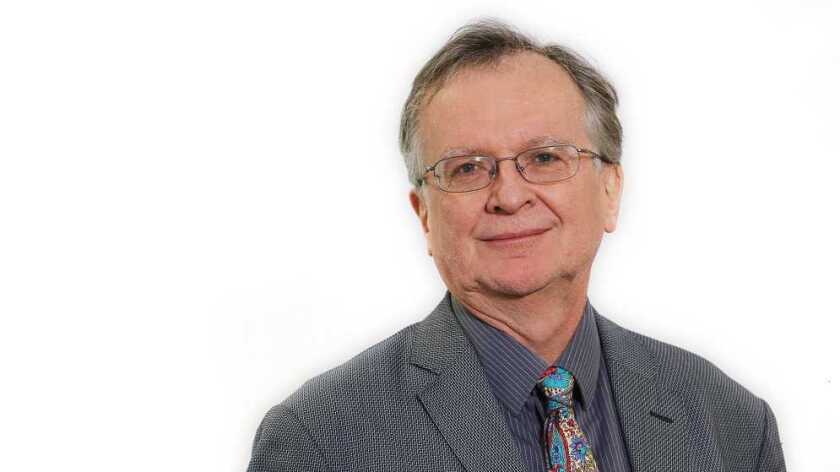The wireless industry is getting ready for an increase in the data it can carry of at least 100-fold, perhaps 500-fold – and the fibre industry is going to have to gear up for all the backhaul that the new low-latency networks will need for this era of hyperscale data.
Three factors will come together to boost the available capacity: more spectrum, especially in the 20-100GHz range, millimetre waves; more efficiency, thanks to steering these high-frequency waves right at the user; and tiny cells, meaning frequencies can be reused – if you have the fibre connections.
At the same time the internet of things (IoT) is going to change the demands on the system, so dense networks will be a necessity, not an option. One of the requirements of the future networks is low latency – of one millisecond or less.
If you have a spare half-hour, go to the website of this year’s Optical Networking and Communication Conference (OFC), which took place in San Diego. There, Marcus Weldon, president of Bell Labs and CTO of Nokia, gave an outstanding presentation of why we will need all this capacity and what the industry is doing to supply it.
At the same conference, scientists from Google and NEC also talked about how they have been able to double – maybe triple – the capacity of a subsea cable. They showed what they can do to push long-haul limits, but Weldon explained eloquently that it’s on short-haul connections that the industry needs to focus.
Weldon explained in that OFC keynote speech that industrial networks – for connected vehicles and so on – need a latency of no more than 1ms. Why? He didn’t say this, but this is my rough calculation. Take a car going at 50km/h (or 30mph): in one millisecond it travels 14mm. If you’re going to avoid collisions with other vehicles, which are likely also networked, or with people, whether pedestrians or cyclists, which aren’t, you’ll need that sort of accuracy.
It’s not just vehicles. Industrial machines and other IoT services will need low latency. A round-trip time of 1ms means the distance to and back from the data centre must be 100km or less.
If you’re in Hong Kong, London or New York, you’ll probably have a data centre within 50km – though maybe not the right data centre. What happens when you get more than 50km away: does your autonomous vehicle lose its autonomy?
So welcome to the world of the edge cloud – which makes one realise how prescient were the founders of EdgeConneX. Data will need to be no more than 50km from everyone. That will mean a complete rethink of everyone’s ideas of how networks are designed.
It gets worse, because part of this surge in demand for data will come from the virtual radio access networks (vRANs) that will be used for 5G mobile. These base stations will need high capacity but also even lower latency in their control plane. Weldon put it at 30 microseconds (30µs), around a thirtieth of the current 1ms requirement.
So, does that mean data needs to be stored no more than 1.5km away from anyone on a vRAN? Quite a challenge.
One of the more intriguing presentations at the OFC was from a joint Google/NEC team on how to squeeze more and more out of subsea cables. They said they have doubled the performance of the Faster cable linking Taiwan to Oregon, and they believe they can go on to triple it.
The 10,000km cable was originally designed to carry traffic at 2 bits/second/hertz, but using artificial intelligence (AI) techniques they increased spectral efficiency first to 3b/s/Hz and then to 4b/s/Hz – twice the original specification.
Toru Kawauchi, general manager of NEC’s submarine network division, said they’d used machine learning algorithms in place of the previous “deterministic models of non-linear propagation” through the fibre.
Google and NEC tested the performance on the Faster cable itself in a field trial carrying live traffic from Google data centres. NEC has also carried out offline field trials over dark fibres with even more promising results. They used fibre of the same length and achieved spectral efficiency of 5.68b/s/Hz and made other measurements that promise 6.06b/s/Hz – three times the original design specification of the Faster cable. That means 6b/s/Hz is a “realistic target”, said NEC.
Both the Google/NEC team and Weldon from Bell Labs paid frequent tribute to Claude Shannon, the Nobel prize-winning Bell Labs mathematician who 70 years ago this year worked out the theoretical limits to how much information you can carry on a particular chunk of spectrum.
We’re pretty much at that Shannon limit now: NEC is close with Faster in the subsea world, and the wireless world is nearly there too. Densification and millimetre spectrum are the only hopes to get more wireless capacity. For subsea? More wavelengths and more fibre.






